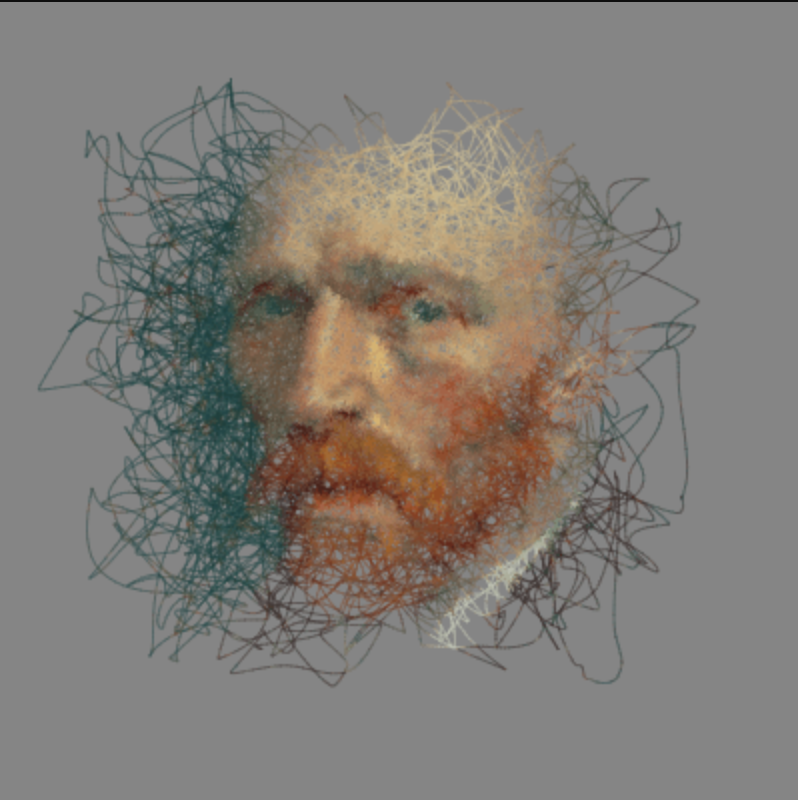Taking inspiration from the work of Jackson Pollock, I was interested in finding interesting ways in which artists have applied randomness in generative art, specifically using concepts like the random walk.I stumbled upon a website called Unography Mag where several famous paintings are recreated using randomness principles.
Based on this, artist Dhruv Karan recreated Vincent Van Gogh’s self-portrait is an appropriate example of using randomness in generative art. What I particularly enjoy about this work is that it gradually reveals the full picture, so someone watching it can spend time trying to guess what the picture is and therefore be engaged in the artwork. Applying Brownian motion and Perlin noise, Dhruv Karan used the tracing of the line across the canvas like a digital paintbrush.
It seems like while defining how the random walk of the line will happen, the algorithm uses a certain mapping of color to paint the picture, so a line on it’s a path in a way “deposits” color on the canvas to reveal a part of the painting. He also describes how pixels can be assigned rgb values for this artwork. It reminds me of how pointillism was used in painting, where the smallest unit is a point or pixel.
![[OLD FALL 2020] 15-104 • Introduction to Computing for Creative Practice](wp-content/uploads/2021/09/stop-banner.png)
